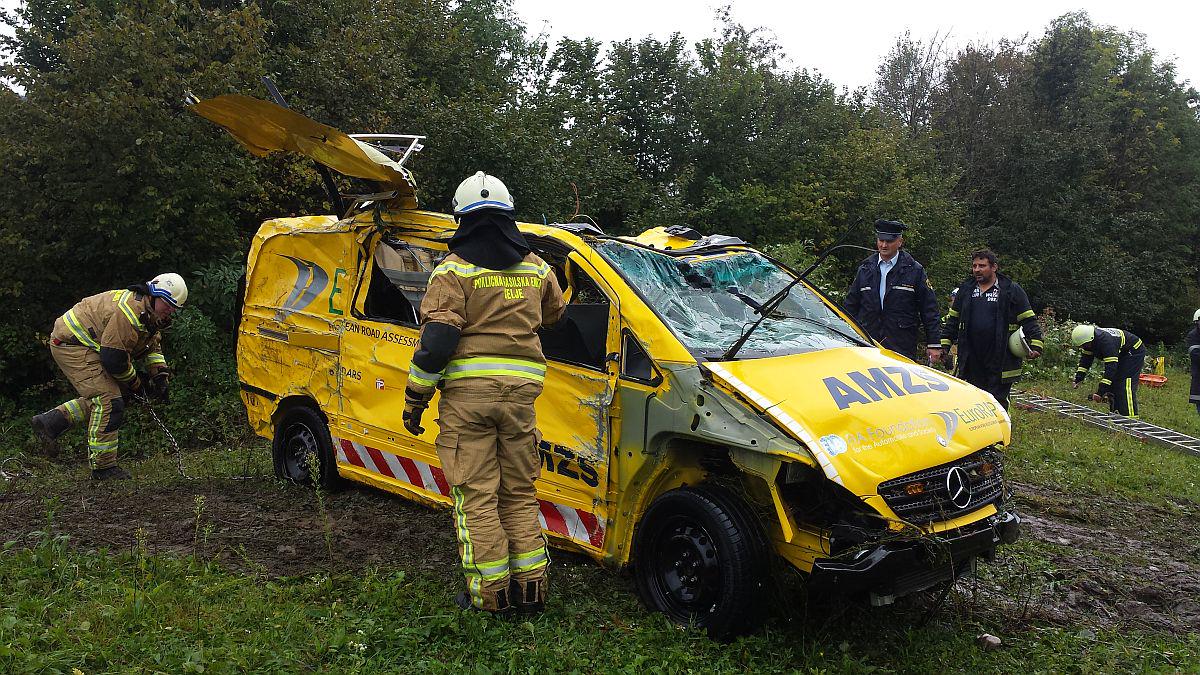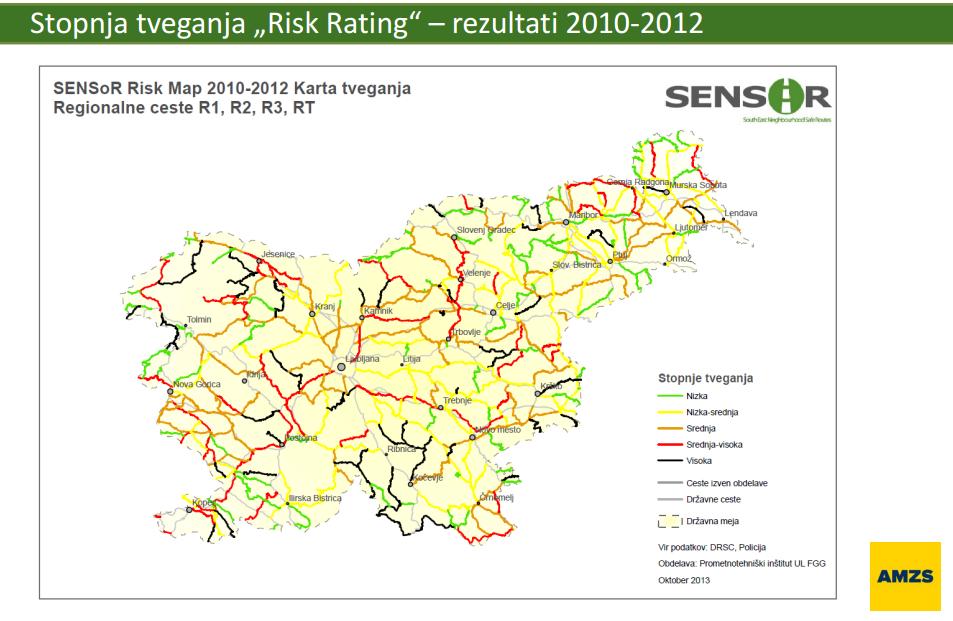
AMZS presented the results of the Sensor project financed by the EU. Its purpose was to establish the state of roads in South East Europe (besides the Slovenian roads, the conditions of roads on the entire Balkan peninsula was estimated, in Hungary, Slovakia, and Romania). The Faculty of Civil Engineering of Ljubljana participated in the survey.
The evaluation of roads was based on risk ratings, taking into consideration three factors, i.e. drivers, vehicles, and roads, evaluating risk for traffic accidents (some 6500 km of roads were inspected), and on assigned number of starts (on a one-to-five scale), where the conditions of the roads, and their surroundings (3179 km or roads were inspected) were considered.
The basic finding of the project came as no surprise, as it was established that motorways and highways are safer than the remaining main and regional roads, even by 10 times. Most of the roads in South East part of Europe, and in a part of the Middle Europe, got rather bad scores, as 30 to 60& of the roads pose a high, or medium-high degree of risk.
Many of the main roads are in bad condition
The stars were assigned for the state of equipment of roads, and their suitability for prevention of conflicts between traffic participants, possibilities for responses in case of traffic conflicts, and level of protection for participants of accidents. In Slovenia the most frequent are frontal and side collisions, sliding of vehicles, and accidents involving pedestrians, and cyclists.
In Slovenia the worst score have been given to regional and main roads; almost one third have received only one star. The worst graded road sections were, e.g., roads Idrija–Tolmin, and the road across the Gorjanci mountains. Most of the highway sections have scored three stars. "We are speaking of strong three stars, almost four," Jure Kostanjšek explained, Head of the Project, and Secretary of the commission for education and safety in traffic at AMZS.
"The Slovenian roads are not dangerous, they only pose a larger level of risk for accidents," believes Stanislav Zotlar, Head of the Transport Technical sector at the Slovenian Road Agency. They were not surprised by the results at the Slovenian Road agency, as they are fully aware of the conditions on the Slovenian roads. They make their own surveys using different criteria, and try to improve the deficiencies by different measures.
Slovenian politics disinterested
General Secretary of AMZS Robert Štaba blames the Slovenian politics as well for poor conditions on certain Slovenian roads. "Politicians are to blame, as they have not established criteria," he said, and mentioned the example of the Netherlands, where the leader of the government promised that the Dutch would drive on roads scored with at least three stars by the end of 2020.
What would better roads, deserving three stars, mean for Slovenia, and how to achieve that goal? AMZS as the most frequent deficiency, and proposed measures, mention guard rails, removal of obstacles, optical guiding with road markings, centre lines on carriageways, turning lies, widening of driving lanes, 2+1 lanes on long ascents... Even low priced interventions which would cost 170 million EUR during 20 years, would according to their conclusions prevent 4800 fatalities or seriously injured in traffic accidents, i. e. 240 per year.
Gregor Cerar
Translated by G. K.


































































